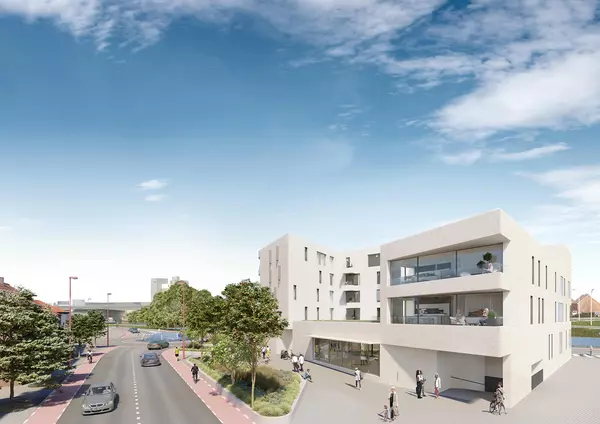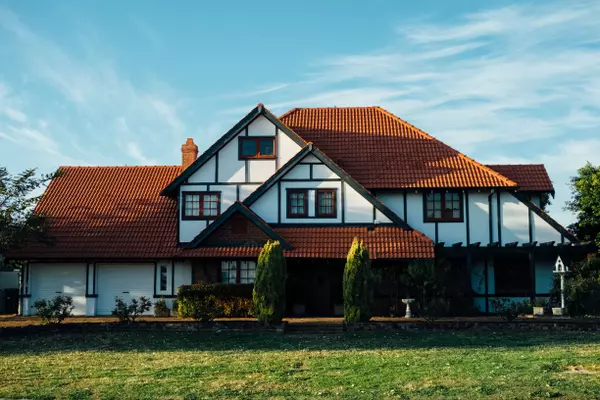Subtle touches elevate newly opened McGrath Outpatient Pavilion
On the opening day of the building that bears her family name, there were many details that drew Laurie McGrath’s eye, but only one nearly brought her to tears.
Having grown up in a family known for construction, McGrath has learned to appreciate those subtle touches that can elevate a building’s character: The way a bed of landscaping rocks is installed at just the right angle to look natural, how the round faces of electrical outlets poke through upholstered seating, providing a ready charge without looking too mechanical, the way a color palette designed to help patient navigation can be reflected in original art pieces, reinforcing a theme that binds disparate parts into a whole.

As she toured UC San Diego Health’s new McGrath Outpatient Pavilion in Hillcrest on Monday, these subtle flourishes clearly satisfied a woman who grew up in a family that found success in engineering and construction, building everything from roads to whole housing developments. On the fourth floor, McGrath pointed out the amount of space that this new structure devotes to infusion, delivering medications directly into patients’ bloodstreams as they sit, sometimes for as long as an hour. It is not uncommon for these spaces to be crowded, patients, many coping with cancer diagnoses, pushed together in a forest of IV poles, plastic bags of medicine hanging overhead.
Extra attention was taken here, McGrath notes, to not only make the unit look nice, light blue accents mirroring the decor of the entire floor, but also to dedicate enough square footage to provide space for privacy, creating areas like half-size hospital rooms with entrances shielded for privacy.
Intellectually, she understood how this arrangement would work, but seeing the first real patients use it Monday morning delivered a powerful dose of emotion.
“This is why we do what we do,” McGrath said, tears forming. “It’s the feeling you get from really helping and supporting people that goes way beyond what I had in mind at the beginning.”

Finally, big moves in Hillcrest
The McGrath Family Foundation, which Laurie McGrath leads in addition to her position as chief executive of McGrath Development Inc., contributed $25 million toward the project’s construction, with an additional $10 million given by Price Philanthropies to establish the Barbara Parker, MD, Breast Center and to name a public plaza outside the facility’s main entrance. According to the University of California’s consolidated construction report, the six-level facility’s total cost — construction and equipment — is $455 million, pushing to $570 million with the inclusion of an adjacent new parking garage and physical plant.
The McGrath name has recently been active in supporting health care infrastructure, giving $10 million to Sharp HealthCare in 2023 for a 152-bed medical tower at Sharp Memorial Hospital in Serra Mesa that is expected to open in 2030.
It is the first major new building added to the university’s Hillcrest medical and research campus since 1992, when a $40 million seismic retrofit added an 11-story tower and a wing to better serve outpatients.
Many have waited a long time for such an investment. While existing buildings have been remodeled and equipment upgraded at UC San Diego Medical Center, the vast majority of the university health system’s big moves have gone into the La Jolla medical campus south of Genesee Avenue and east of Interstate 5, with the construction of Jacobs Medical Center, the adjacent Altman Clinical and Translational Research Institute and the Komen Outpatient Pavilion together representing an investment of more than $1.3 billion.

Becky Baxter of Point Loma and her husband, Phil Schreyer, found themselves in the McGrath Pavilion on Monday morning on its first day of operation. Baxter sat in one of the facility’s new private infusion rooms, expressing her satisfaction that big changes are finally happening much closer to home, decreasing the likelihood of travel to La Jolla for routine appointments.
Having reconnected with her high school sweetheart after her second husband died, through a connection made on classmates.com, the couple, in their early 80s, puts a priority on preserving time together.
“I’m closer to this location than I am to the La Jolla offices, and I like coming down this way,” Baxter said.

Service expansion
The new building includes six operating rooms and seven suites for medical procedures and houses office and exam room space for a wide range of medical specialties, including urology, gastroenterology, neurosurgery, ear, nose and throat care and hepatology. In addition to the new infusion center, there is additional space dedicated to cancer care and advanced medical imaging.
All told, Lisa Rhodes, UCSD’s chief administrative officer for health campus development, said the McGrath pavilion should reduce the number of trips that mid-city San Diego patients must make to Jacobs, especially those who need cancer care. And, the new building relocates many outpatient services that were previously housed in UC San Diego Medical Center next door.
“Opening the McGrath pavilion also allows us to bring other services to Hillcrest,” Rhodes said. “As an example, there are some cardiac services that can now come into the hospital, because this opens up space, operating rooms and beds that we will be able to backfill.”
The new building follows the modern medical trend of assigning each floor not only a number, but a color, making it easier for patients to tell if they’re headed in the right direction just by the hue that they see on walls and incorporated in public art.

On Monday, Laurie McGrath paused to examine a multi-story mobile that fills an angular corner atrium spanning multiple floors.
She noted that the movable art piece’s hanging elements, balanced across thin silver wires, include the oranges, yellows, blues and other shades for each floor. And there are other spaces, such as outdoor overhangs with mosaic murals overhead, that bring color and a whimsy to a space visited by many who have serious medical matters on their minds.
“It’s clever, it’s just so clever, and I find that to be just delightful,” McGrath said.

The big picture
While many medical office buildings have sprung up in recent years, this one is significant as it is the first major step in the university’s plan — estimated to cost more than $3 billion — to rebuild its Hillcrest medical campus.
While the redevelopment plan approved by the University of California Board of Regents in 2019 calls for the project to culminate with the replacement of UC San Diego Medical Center on Arbor Drive with a 300-bed medical tower estimated to cost $2 billion, the next item on the list was to be a multipurpose clinical research building constructed on a 1.7-acre chunk of the larger 61-acre Hillcrest campus. Bordered by Arbor Drive, First Avenue, Montecito Way and Front Street, the 135,000-square-foot building is to incorporate lab space for clinical research, especially around antiviral therapies, HIV and the medical applications of cannabis, including space to run and administer clinical trials. Plans also call for community-serving amenities such as a café, wellness center and childcare at ground level.
While this second phase of the larger redevelopment plan was to get underway soon, UCSD Chancellor Pradeep Khosla said in April that the $182 million project, along with another research building in La Jolla, had been indefinitely postponed due to significant proposed cuts to research funding by the federal government. And a planned public-private partnership to build housing for workers on the western side of the large property, originally projected to open in 2026, is also on hold due to current market conditions, including high interest rates.

Rhodes, the campus development czar, said that while one aspect of the redevelopment plan is paused at the moment, planning to rebuild the hospital continues with a rough estimate that construction could be done by 2032. That projection, though, comes in uncertain times. Nobody currently feels confident with long-range planning of major public investments when so much about federal and state funding, especially in the health care world, changes with each passing month.
“With the hospital replacement, we are moving into what’s called the schematic design phase,” Rhodes said. “We want to make this happen, and we are still pushing forward and going as fast as we can because the faster we can do it, the lower the cost-escalation will be.”
Categories
Recent Posts










GET MORE INFORMATION


